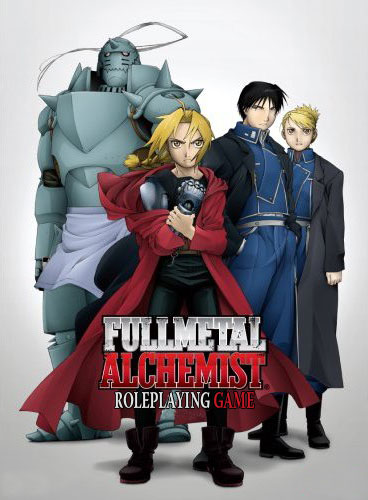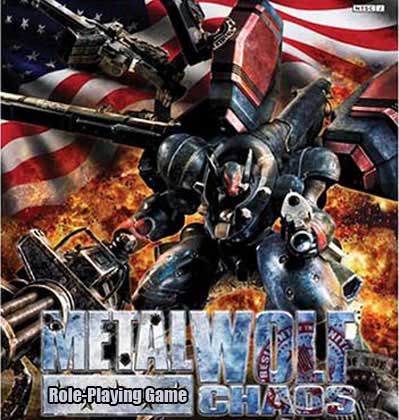
This installment is a little different from the others, since it’s about a genre rather than a particular title, and a lot of it is about me trying to figure out how to go about designing an RPG for that genre. We’ll return to our regularly scheduled column next time.
What Is It?
“Shonen fighting manga” is what I’ll call a genre of manga (and related anime) that focuses on passionate characters engaged in epic conflicts. Most of the really popular titles fall within it (especially from Shonen Jump and its ilk), so as a genre it covers a whole lot of things that lots of people find compelling. These titles are not without their flaws, but they bring some awesome to the table in their own ways.
I could go on for days mentioning dozens of titles, but I’ll just briefly cover a handful:
- Bleach: A teenager named Ichigou Kurosaki inherits the powers of a Death God, and must protect his town from dangerous dead spirits. But the other Death Gods are now faced with a conflict that could destroy their Soul Society, and Ichigo will find himself at the very heart of it.
- Dragon Ball Z: This show takes a lot of flak, especially for its pacing (too quick in the manga, painfully slow in the anime), but it’s ultimately the story of a good man trying to fight tyranny while coming to terms with being an alien. It takes place in a fanciful world full of strange technology and stranger mysticism, where a car can fit into a capsule and seven magic balls and raise the dead.
- Magical Girl Lyrical Nanoha There are some people who consider this show to be derivative of every major magical girl show ever. This proves that they haven’t watched past the half-way point of the first of its three seasons, or else they’d know that once the Time-Space Administration Bureau becomes involved, everything changes. Nanoha is a kindred spirit to Galaxy Fraulein Yuna, a brave and cheerful girl whose real strength is rooted in her love for others. No other magical girl series I know of has the protagonist sit down for a frank talk with her mother about what she’s been doing in secret, and there definitely isn’t another where she becomes an elite career mage for a dimensional enforcement authority.
- One Piece: This juggernaut of a franchise takes place in a fanciful world of dread pirates, corrupt governments, and ancient secrets. Luffy, who ate the Gum-Gum Fruit when he was young (making him elastic, but cursed to be unable to swim), wants to become the next Pirate King. He and his crew — all people shaped by childhood tragedy — set out after the One Piece, the legendary treasure. Along the way, Luffy and his friends must put everything on the line to defeat the most vile opponents imaginable and make Luffy’s naive ideals of friendship a reality in a world of unrelenting injustice.
- Some others that come to mind include Naruto, Tokyo Underground, Shakugan no Shana, Gurren Lagann, Mahou Sensei Negima!, Rurouni Kenshin, and so on.

Why’s It Awesome?
Shonen fighting manga may be overblown and cheesy, but when it’s done well it can enthrall millions. Fights can stretch across entirely too many episodes, but they always Mean Something. They’re about some guys putting everything on the line for what they believe in, against all odds. A really good fighting manga story is packed with balls-to-the-wall conflicts and world-shattering revelations.
Gaming It
It took me a while to realize it, but my efforts to design an “anime” RPG over the past few years pretty much boil down to wanting a game that excels at this genre. I haven’t found it yet, and I haven’t figured out how to make it myself. Whatever virtues games like BESM and OVA have, they’re essentially universal (action resolution based) systems with some nifty anime-inspired tweaks, and they don’t address what I think I really need for the shonen fighting manga style. The game I tentatively named “Anime Dreams” contained some important ideas that will likely be vital to my dream game if it ever comes to fruition:
- The heart of the game is a conflict resolution engine that allows for sacrifices, reversals, escalation, creativity, and at least some immersion.
- The group collaboratively creates and maintains a “fan guide,” a wiki or somesuch with details on the campaign and its setting, characters, and events.
- A power scale mechanic (kind of like mass/strength scaling in Fudge), to show overwhelming differences. Half of DBZ is characters trying to raise their power scale enough to stand up to the new bad guy.
- Series/setting creation as a group activity, with specific rules, and guidelines for adapting existing titles, since lots of people want to play something based on an existing anime series.
- At least one pre-made setting with quick-start rules and a replay included.
Aside from making it drip with anime/manga flavor as much as possible, I think there are basically two things the game needs to do, and they’re closely related.
1. Make conflicts — whatever form they take — interesting, intense, and consequential.
It may be that I just need to hack the hell out of an existing game with a conflict engine (TSOY, SotC/FATE, DitV, etc.), but I think I need to (1) play more of those games, and (2) really sit down and think about what exactly my dream game needs.
I originally wanted to make it diceless (“A character should only win by luck if he has a ‘Lucky’ trait on his character sheet”), but now I’m not so sure. The real issue is deprotagonization, which is separate from dice vs. diceless. My previous attempts at making it diceless seem to create paperwork without all that much benefit in return. Of course, now that I’ve got a much better grasp on how Yuuyake Koyake works, it occurs to me that a character’s passions and bonds could fuel one or two simple point pools (one for being proactive, one for rebounding maybe?).
From the source material, it’s pretty clear that most character development needs to happen through conflicts. Shonen fighting manga characters improve by leaps and bounds (or just reveal previously hidden tricks) when under duress.
2. Keep the players and their characters actively engaged in the story.
That’s the major challenge of running my current OVA campaign. The game system is good at some things, but it really doesn’t address this at all, and as the GM I have to try to keep an eye on things and make sure there’s stuff going on to involve all of the PCs. It goes without saying that there’s a limit to how much the actual rules can contribute here, but it definitely needs something.
Now, if you want to run a shonen fighting manga type game without either creating a new system or waiting for someone else to, there are some possibilities. Some have suggested using a hack of Dogs in the Vineyard to do Naruto, and for that matter Filip treated us to Gurren Lagann done with InSpectres/UnSpeakables. DitV is on the right track in terms of supporting play where characters tend to engage in individual conflicts (that’s how it usually seems to work in manga after all), and the use of escalation (If Super Saiyan isn’t enough, it’s time to risk it all on Super Saiyan Level 2!) and fallout.
The Shadow of Yesterday has some ideas that point in interesting directions, but there are elements of its paradigm (like how someone Unskilled can beat a Grand Master by pure dumb luck, if not very often) that to me are at odds with shonen fighting manga sensibilities. It and Spirit of the Century both reward characters for being passionate and irrational, but would need some major hacking to handle the power levels of a Super Kamehameha or Starlight Breaker instead of the pulpy action they were intended for.
Otherwise, the alternative is to use a more typical universal system (anime-flavored or otherwise) to try to simulate the particular setting, which (as the anime/manga character page of Surbrook’s Stuff demonstrates) can accomplish more than you might think, though again it leaves the conflict and character drama largely in the hands of the participants. That’s not necessarily a bad place for it to be, but personally I want a game that can do a little more.
Next Time: Oh! Edo Rocket








